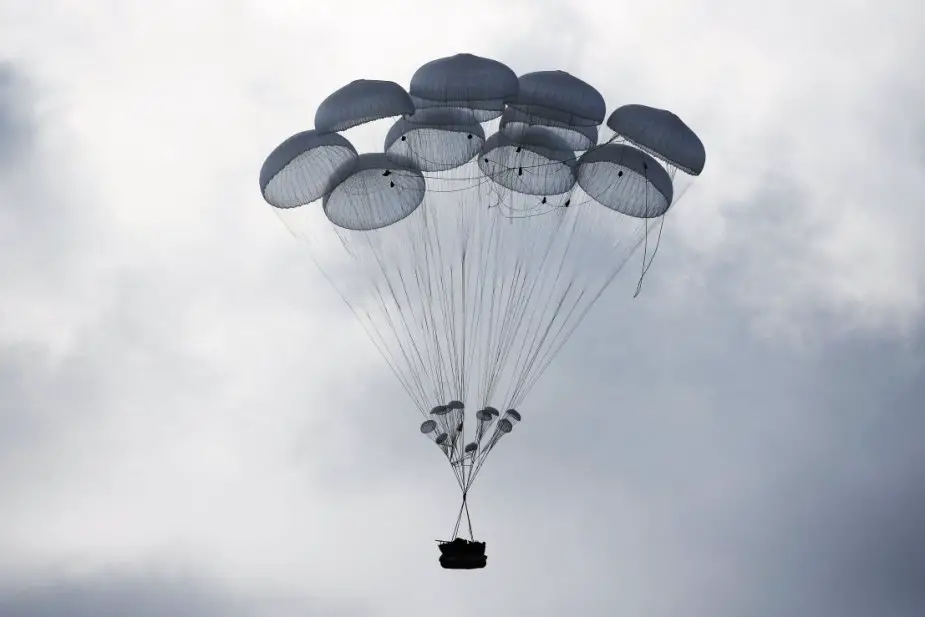Breaking news
Russia's new Bakhcha-U-PDS parachute test trials enter final stage..
Beginning from 2018 the latest Russian combat airborne vehicles - BMD-4M will land on the battlefield with the crew inside. It will be possible after the creation of a platformless parachute is completed. Experts say such hardware airdrop will considerably decrease combat engagement time, the Izvestia daily writes.

The Bakhcha-U-PDS parachute system being tested with a BMD-4M armored vehicle
(Credit: Russian Ministry of Defense)
The Russian Defense Ministry told the newspaper the 106th airborne division will hold a tactical exercise in August. BMD-4M will for the first time be airdropped with the crew. In future such assault will become a major element of combat engagement and paratrooper training process.
The platformless PBS-950U (Bakhcha-U-PDS) parachute was designed for BMD-4M. The Technodinamika Holding confirmed the test trials have entered the final stage.
PBS-950U comprises the parachute of 11 cupolas with a space of 350 square meters each and a shock absorber. Minimal airdrop altitude is 400 meters and the time to landing comprises only 40 seconds. A paratrooper lands from such an altitude in 90 seconds. Therefore, safe landing is impossible without shock absorber.
"Multi-cupola parachute system MKS-350-12 of series 2 and forced air-inflation absorber are used to ensure reliability and failure-free operation of the parachute, as well as crew safety inside the vehicle," Technodinamika said.
"The technical possibility of airdropping the crew and paratroopers inside BMD-4M and BTR-MDM is envisaged. The requirement was initially set for the parachute and the vehicles. Maximum landing overload does not exceed 15g which was confirmed by experiments," it added.
The "forced inflation" quickly fills the absorber with air and cushions the landing shock. Additional crew safety is provided by upgraded seats in BMD-4M. They resemble aircraft pilot or cosmonaut seats and a sophisticated seat belt system fastens the paratroopers. Acceptance trials were held from 2016 and the parachute operated successfully in the mountains, extreme climate, temperatures and weather.
Expert Valery Yuryev said BMD landing with the crew gives a major edge in combat. It is a Russian tactical know-how as other armies drop the hardware and paratroopers separately. "To achieve surprise it is necessary to land hardware with the crew. It takes minimal time to engage the vehicles in combat," he said.
Crew airdrop inside the vehicles remains very dangerous despite the latest parachutes. "An ordinary cupola is simple and reliable and the standby parachute can correct the error. The parachutes for hardware have a lot of knots which decrease the reliability. Each crewmember has a standby parachute but it is difficult to use it if the main one fails. There is no time for it," he said.
The first airdropping in the world of BMD-1 with the crew inside took place on January 23, 1976 at the range of Tula training center of the 106th airborne division, the Izvestia recalled.
© Copyright 2018 TASS. All rights reserved. This material may not be published, broadcast, rewritten or redistributed.



















